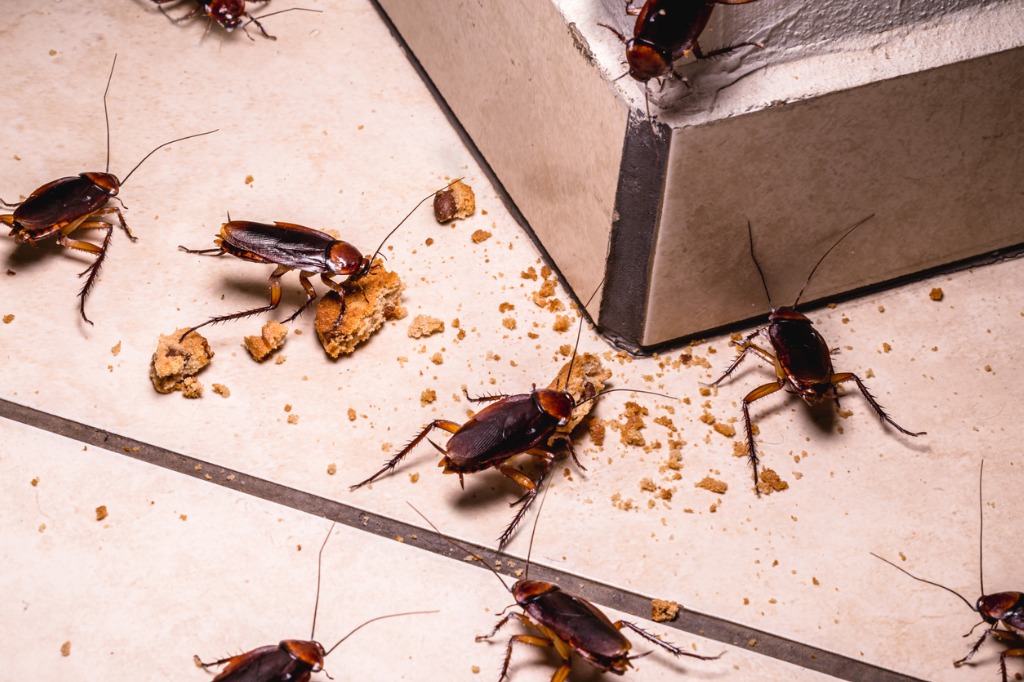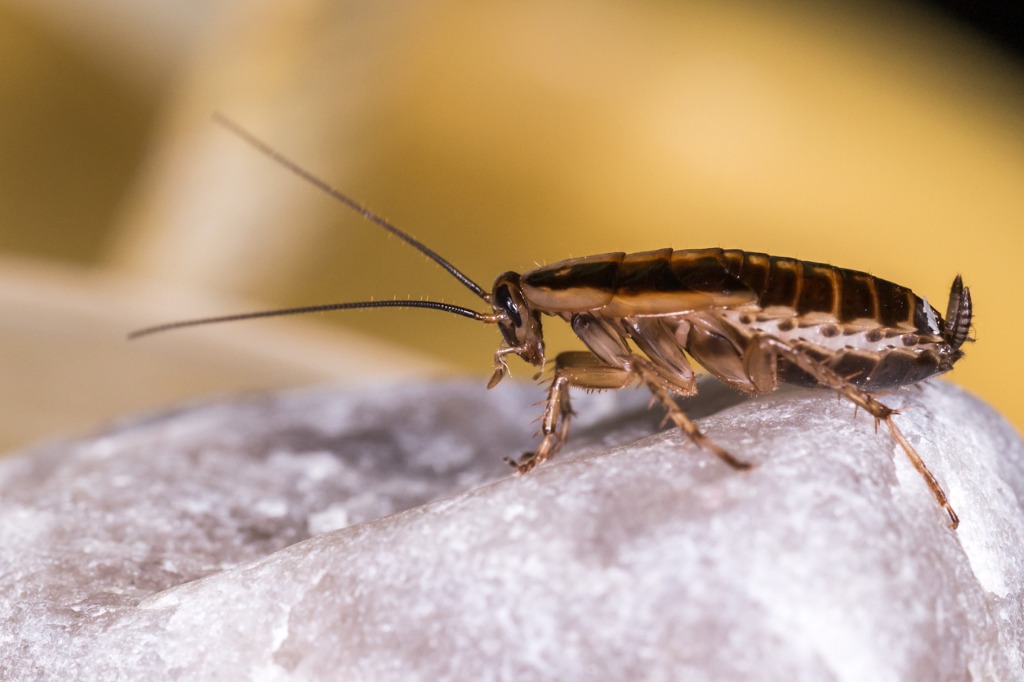Brace yourself for a journey into the realm of cockroaches – some might say it’s an adventure you’d rather avoid, but trust us when we say it’s worth the ride. In this all-encompassing article, we will take you through an in-depth exploration of cockroach species and their habitats like never before. Prepare to be amazed by nature’s ultimate survivors as we unravel their evolutionary adaptations, decode their mysterious behavior patterns, and unveil where they thrive across various ecosystems around the globe. So sit tight (and maybe grab some bug spray), because it’s time to embark on a captivating odyssey into the wondrous world of cockroaches!
Key takeaways
- Cockroaches belong to the order Blattodea, with over 4,600 known species worldwide.
- They are highly adaptable insects found in diverse habitats, from forests to urban environments.
- While some cockroach species are pests, many play essential roles in ecosystems as decomposers.
- Cockroaches have evolved various adaptations for survival, including flattened bodies and nocturnal behavior.
- They can pose health risks by carrying and spreading pathogens and allergens in human environments.
- Control and prevention measures involve sanitation, sealing entry points, and targeted pest management.
- Conservation efforts focus on protecting natural habitats and raising awareness of their ecological importance.
Taxonomy and Diversity of Cockroach Species

Explanation of the cockroach order (Blattodea)
The cockroach order, scientifically known as Blattodea, encompasses a diverse group of insects with a lineage stretching back over 300 million years. These insects are recognized for their characteristic flattened bodies, long antennae, and robust mandibles, which they use for chewing. Cockroaches are found in a wide range of environments globally, adapting to both tropical and temperate climates. While some species are notorious pests associated with unhygienic conditions, others inhabit natural ecosystems, contributing to ecological processes.
Major families and subfamilies of cockroaches
Within the order Blattodea, several major families and subfamilies house various cockroach species. One of the prominent families is Blattidae, which includes subfamilies like Blattinae, known for the American cockroach, and Blatellinae, which features the infamous German cockroach. Another family, Blaberidae, is home to diverse species, including the Madagascar hissing cockroach, while Corydiidae contains a wide array of cockroach species found in diverse habitats. Ectobiidae, with its subfamily Pseudophyllodromiinae, houses species such as the Oriental cockroach. Cryptocercidae includes wood-feeding cockroaches, and Blattulidae encompasses a smaller number of species, primarily found in Africa and Asia.
Number of known cockroach species worldwide
As of my last knowledge update in September 2021, there were over 4,600 known species of cockroaches worldwide. It’s essential to bear in mind that ongoing research and taxonomic studies may lead to the discovery of new species or revisions in existing classifications, potentially altering this count. These insects hold ecological significance and continue to be subjects of scientific interest, both for understanding their role in ecosystems and for managing them as household pests. Accurate tracking of their species diversity aids in various fields of entomology and pest control.
Common Cockroach Species
Description and characteristics
The American cockroach is a large, reddish-brown to dark brown cockroach species, measuring 1.2 to 2 inches (3 to 5 cm) in length. It has an elongated oval body with long antennae and wings, although it doesn’t fly well. These cockroaches are resilient scavengers that feed on various organic materials.
Habitat preferences
American cockroaches thrive in warm, humid environments and are commonly found both indoors and outdoors. They prefer moist areas like basements, bathrooms, and sewers. They are nocturnal and come out at night to forage for food, and they have an omnivorous diet. Effective pest control involves sanitation and sealing entry points.
German Cockroach (Blattella germanica)

Description and characteristics
Small, light to medium brown cockroach with distinctive dark stripes behind its head. Adults are about 1/2 to 5/8 inch (1.3 to 1.6 cm) long. They have a flattened body, long antennae, and rarely fly. Known for their rapid reproduction.
Habitat preferences
Primarily indoor pests, favoring warm, humid areas like kitchens and bathrooms. Nocturnal scavengers require access to food and moisture. They are infamous for their ability to hide in cracks and crevices. Control involves sanitation, sealing entry points, and targeted pesticide use.
Oriental Cockroach (Blatta orientalis)
Description and characteristics
- Medium-sized cockroach with a length of about 1 to 1.25 inches (2.5 to 3.2 cm).
- Dark brown to black exoskeleton, often shiny.
- Limited flight capability and slow, deliberate crawling.
- Notable for emitting an unpleasant odor.
Habitat preferences
- Thrives in cool, damp environments.
- Commonly found indoors in basements, crawl spaces, and other moist areas.
- Outdoors, inhabit places near water sources, sewers, and areas with organic debris like leaf litter and mulch.
- Nocturnal foragers with a diet that includes decaying organic matter.
- Control involves addressing moisture issues and eliminating potential food sources.
Cockroach Habitats
Forests and woodlands
Many cockroach species thrive in forested areas and woodlands, particularly in leaf litter, decaying logs, and fallen debris. They play essential roles in the decomposition of organic matter, contributing to the forest ecosystem’s nutrient cycling. Some species, like wood cockroaches, are well-suited for life in these environments and are not typically associated with human habitation.
Caves and underground environments
Certain cockroach species have adapted to live in caves and subterranean environments. These habitats provide consistent humidity and temperature levels, making them suitable for cockroaches that prefer stable conditions. Cockroaches in caves often feed on bat guano and other organic materials found in these dark, hidden spaces.
Wetlands and marshes
Wetlands and marshes offer a unique habitat for some cockroach species. These areas are characterized by high humidity and ample water sources, making them ideal for cockroaches that require moisture. Cockroaches in wetlands play ecological roles in breaking down plant matter and contributing to nutrient cycling in these ecosystems.
Urban and Human Environments
Homes and buildings
Cockroaches frequently infest homes and buildings, where they seek shelter, warmth, and access to food and water. They hide in cracks, crevices, and voids within walls and floors. Common indoor species, like the German cockroach, can establish large populations in kitchens and bathrooms, feeding on food crumbs and organic residues. Effective pest control measures are often required to manage infestations in residential and commercial structures.
Restaurants and food processing facilities
Cockroaches are a significant concern in food-related establishments due to their potential to contaminate food products and spread diseases. Restaurants, food processing plants, and commercial kitchens provide ideal conditions for cockroaches, with a constant supply of food and moisture. Stringent sanitation practices and pest management are crucial to prevent infestations and maintain food safety standards.
Sewers and drainage systems
Sewers and drainage systems offer cockroaches a dark, damp environment with organic matter for sustenance. Species like the Oriental cockroach are often found in these locations. Cockroaches in sewers can enter buildings through pipes and drains, posing sanitation and health risks. Regular maintenance and preventive measures are necessary to limit their presence in sewage systems and reduce their entry into buildings.
Adaptations for Survival
Morphology for habitat selection
- Flattened Bodies: Many cockroach species possess dorsoventrally flattened bodies. This body shape allows them to squeeze into tight spaces, such as cracks, crevices, and narrow gaps, which serve as hiding places from predators and provide protection from adverse environmental conditions. It also enables them to navigate through narrow pathways, making it easier to find food and escape threats.
- Antennae and Sensory Organs: Cockroaches have long, sensitive antennae that help them detect environmental cues such as pheromones, vibrations, and chemical signals. These antennae are crucial for navigation, locating food and water sources, and avoiding dangers in their surroundings.
- Leg Structure: Cockroaches have well-developed legs with sharp claws that allow them to grip surfaces and climb vertical structures. This adaptation aids in their mobility and ability to explore different habitats, including walls, ceilings, and various substrates.
Camouflage and protective coloration
- Coloration: Cockroaches often exhibit coloration that provides them with camouflage. For example, some species have dark, earthy tones that help them blend into their natural habitats, such as leaf litter in forests or dark crevices in urban environments. This protective coloration makes them less visible to predators and potential threats.
- Nocturnal Activity: Many cockroach species are nocturnal, meaning they are primarily active during the night. This behavior reduces their exposure to diurnal predators and allows them to carry out essential activities, such as foraging for food, in low-light conditions when they are less likely to be detected.
- Freezing Reflex: Some cockroaches have a “freezing reflex” in response to sudden changes in light, which causes them to remain motionless. This behavior can be a survival strategy to avoid detection by predators.
Behavioral adaptations
Nocturnal behavior
This is a common behavioral adaptation observed in many animal species. Nocturnal animals, such as owls, bats, and some species of rodents, have evolved to be active primarily during the night. This behavior is advantageous as it helps them avoid predators that are active during the day and also minimizes competition for food resources. Nocturnal animals often possess specialized sensory adaptations, like enhanced night vision and acute hearing, to navigate and locate prey in low-light conditions. These adaptations enable them to hunt efficiently and evade potential threats.
Scavenging and feeding habits
Scavenging and feeding habits represent another set of behavioral adaptations found in various animals. Scavengers, like vultures and hyenas, have evolved to feed on carrion, which is the remains of dead animals. This adaptation reduces competition with predators that actively hunt live prey and allows scavengers to take advantage of a consistent food source. They often have physical adaptations, such as strong jaws and digestive systems capable of handling decaying flesh and bone.
Reproductive strategies
Prolific breeding
Prolific breeding is a reproductive strategy employed by some species to maximize their chances of offspring survival. Animals that engage in prolific breeding, such as many insects and rodents, produce a large number of offspring in a single reproductive event. This strategy compensates for high mortality rates among their young due to predation, environmental factors, or competition for resources. By producing numerous offspring, at least some are likely to survive and reproduce, ensuring the species’ continuation.
Egg cases and nymph development
Egg cases and nymph development are characteristic features of certain species, particularly among arthropods like insects and arachnids. These organisms often lay eggs enclosed within protective structures, such as egg cases or egg sacs. Inside these protective coverings, the eggs develop into nymphs or juvenile forms. This strategy helps safeguard the vulnerable eggs from environmental threats and predators. Once the nymphs hatch, they undergo a series of molts and growth stages until they reach adulthood, gradually developing the characteristics necessary for survival and reproduction in their specific habitat. This method of reproductive development allows for increased offspring survival rates and adaptation to various environmental conditions.
Cockroaches and Public Health
Disease transmission potential
Cockroaches can carry and spread bacteria, viruses, and parasites on their bodies and in their feces. When they come into contact with food, utensils, or surfaces, they can transfer these pathogens, potentially causing foodborne illnesses and gastroenteritis. This is particularly concerning in areas where sanitation practices are suboptimal.
Allergen production
Cockroach infestations are known to trigger allergies and worsen asthma symptoms, especially in vulnerable individuals. Cockroach allergens are present in their saliva, feces, and shed skins, and they can become airborne. Prolonged exposure to these allergens can lead to respiratory issues, including coughing, wheezing, and shortness of breath.
Control and prevention measures
Control and Prevention Measures: To address these health risks, comprehensive control and prevention measures are crucial:
- Sanitation: Regular cleaning and proper food storage are essential to deter cockroach infestations. Eliminating food sources and hiding places reduces their attraction to homes.
- Sealing Entry Points: Identifying and sealing entry points, such as cracks and gaps in walls, windows, and doors, can prevent cockroaches from infiltrating living spaces
- Baits and Insecticides: Cockroach baits and insecticides can be effective in eradicating infestations but should be used cautiously and according to safety guidelines, especially in households with children and pets.
- Professional Inspections: Periodic inspections by pest control professionals can identify and treat infestations early, preventing them from becoming severe.
Conservation and Management
Threats to cockroach species
Cockroach species face threats like habitat loss due to urbanization and deforestation, pesticide use, competition from invasive species, climate change impacts, and susceptibility to diseases.
Conservation efforts (if applicable)
Conservation measures involve protecting natural habitats, conducting research, monitoring populations, and raising public awareness about cockroaches’ ecological importance.
Pest control strategies
Effective pest control includes Integrated Pest Management (IPM), non-chemical methods, targeted pesticide use, regular inspections, and sustainable, eco-friendly solutions to minimize environmental harm.
Conclusion
Cockroaches are a diverse group of insects that have successfully adapted to a wide range of habitats around the world. With over 4,500 species identified so far, they display remarkable resilience and survival skills. From tropical rainforests to urban environments, these pests have found ways to thrive and reproduce. Understanding their biology and habitat preferences is crucial for effective control and management strategies. By implementing proper sanitation practices, sealing potential entry points, and utilizing targeted pest control methods, we can minimize their presence in our homes and communities. Individuals, homeowners, and professionals must work together to prevent infestations and reduce the negative impact of these resilient creatures.
FAQ 1: What are cockroaches, and how many species exist?
Cockroaches are insects belonging to the order Blattodea, with over 4,600 known species worldwide. They vary in size, color, and habitat preferences, making them a diverse group of insects.
FAQ 2: Where can cockroaches be found in nature?
Cockroaches inhabit a wide range of ecosystems, from tropical rainforests to arid deserts. They are often found in leaf litter, under rocks, in burrows, and even inside rotting logs, depending on the species and their specific habitat requirements.
FAQ 3: Are all cockroaches pests?
No, not all cockroaches are considered pests. While some species, like the German cockroach, are common household pests, the majority of cockroach species live in natural environments and play essential roles in ecosystems as decomposers and prey for other animals.
FAQ 4: What are the ecological roles of cockroaches?
CAockroaches serve as nature’s recyclers, breaking down decaying organic matter. They help to decompose dead plants and animals, returning nutrients to the ecosystem. Additionally, they are an important food source for various animals, including birds, amphibians, and reptiles.
FAQ 5: How can we protect cockroach species and their habitats?
Protecting cockroach species involves conserving their natural habitats, conducting research to understand their needs and threats, and raising awareness about their ecological importance. Implementing sustainable pest control methods in human habitats is also crucial to prevent harm to non-pest cockroach species.

